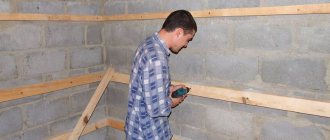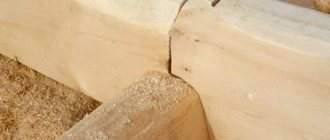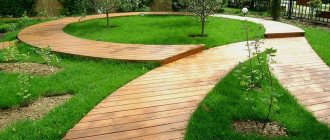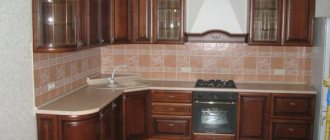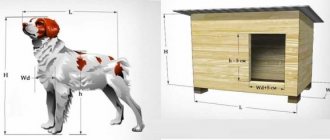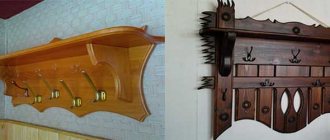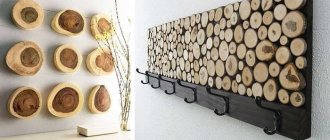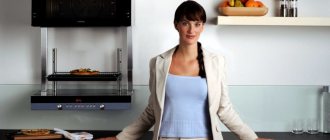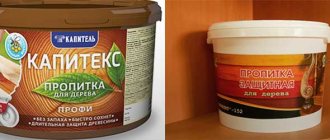If you are reading this article, then you like unique designer furniture, sometimes created with your own hands. This type of thing includes a table made using epoxy resin.
Looking at a photo of an epoxy table made by yourself, you are delighted with the variety of ideas and ornaments that can be embodied in this, without exaggeration, work of art.
Unique ornaments made of wood, shells, coins, dried flowers or sea pebbles will decorate such seemingly ordinary furniture as a table and turn it into the highlight of the entire interior, attracting admiring glances.
But first things first. First, let's look at the technology for making a table from epoxy resin with your own hands.
Step-by-step instructions for making an epoxy resin table are not that complicated.
The whole process involves coating the wooden surface of furniture with resin with decor applied to the furniture and thoroughly sanding after complete drying. But there are many subtleties here too.
First of all, it is worth considering the properties of the main element - the epoxy resin itself.
Properties of epoxy resin
Epoxy resin is a substance that, when mixed with a hardener, forms durable polymers.
Depending on the proportions in which pure resin is mixed with the hardener, it forms:
- liquid substance
- a viscous substance resembling rubber;
- solid;
- high strength base.
In order to get what we need without errors and blunders, we must strictly observe the proportions of substances. For the manufacture of tables from epoxy resin, they are most often 1:1.
If this proportion is observed, the table will be durable, resistant to the environment and damaging factors, and wear-resistant.
If the ratio of substances is violated, the result of so much work will not please you - the strength of the countertop will be low.
There are also two curing methods for resin:
- Hot
- Cold (this is what is used to make a table filled with epoxy resin yourself)
Advantages of epoxy resin table
Tables made with epoxy resin compare favorably with conventional wooden furniture in the following ways:
- When dried, the resin retains its shape and color, makes the countertop resistant to damage and extends its service life;
- Each tabletop is unique and finds bright application in interior styles, such as Provence, Country and others, focused on folk motifs;
- The ability to use almost anything your heart desires for decoration - from buttons and sparkles to dried insects and starfish;
- The resin can be colored with various dyes, including phosphorescent ones.
- Resistant to dampness and cleaning agents.
Disadvantages of an epoxy resin table
The disadvantages include the fact that when making a table from epoxy resin with your own hands, you will have to fork out for several tens of liters of resin.
The second drawback is that if the manufacturing technology is violated, bubbles form in the resin mass, which reduce its strength and spoil its appearance.
- Do-it-yourself shoe racks: a review of the best ideas and a step-by-step description of how to build a shoe rack (85 photos and videos)
Do-it-yourself bag chair - a detailed master class on how to sew a properly comfortable chair (75 photos)
DIY chest - how to make a beautiful and stylish craft from a box, paper and wood (80 photos)
Using epoxy resin as a table covering
The surface of any table has certain requirements. This is an area that, during use, is subject to constant mechanical influences: indentations, impacts, wiping, cuts. Therefore, the top layer must be durable. Being an interior item, the table must also meet aesthetic requirements.
Among the disadvantages of epoxy resin, the following should be highlighted: high cost, instability to low temperatures, toxicity at high temperatures
Epoxy resin, due to its properties, allows you to create surfaces that cannot be scratched, chipped, they do not crack or deform. Poured tables made of epoxy resin are easy to decorate. You can give the fill the desired color, shape, or add elements from natural materials or other object details.
The main operational advantages of the material include the following:
- resistance to mechanical damage;
- moisture resistance;
- non-exposure to ultraviolet radiation;
- immunity to aggressive detergents and cleaning agents, therefore easy to maintain;
- high aesthetic qualities.
Among the shortcomings of the material, it is worth noting the following:
- high cost of material;
- the need to strictly follow the application technology (even with the slightest deviation the result may be unsatisfactory);
- instability to low temperatures (white flakes appear in the hardened composition);
- toxicity when exposed to high temperatures. (However, exposure to such during use in home and office environments is excluded).
The frequent use of epoxy resin for filling countertops is also due to the fact that it gives a perfectly flat surface
The active use of epoxy resin for filling countertops is also explained by the fact that it provides a smooth surface that does not require correction.
Tables with epoxy resin: types of models
The amount of resin used during the manufacture of tables may vary. Some options only require filling the depressions, that is, creating a thin top layer. With large uneven areas and the use of untreated wood materials as a frame, consumption increases significantly. It is possible to use only epoxy composition for countertops.
The price of tables made of epoxy resin directly depends on the quantitative indicators and shape. During practical manufacturing, three types of products are distinguished:
- Made only of resin, without the presence of support. These are small tables that can be used as coffee tables, dressing tables or decorative ones. Such options are not intended for significant mechanical loads.
- Tables with a base, usually wooden, where an epoxy layer is used as a top coating. Such models are easy to decorate. Painting of the base, elements made of paper and plastic, coins, stones, shells, etc. are used.
- Combined types. The resin layer alternates with fragments of another material (wood is mainly used).
The price of epoxy resin tables directly depends on the size, shape and amount of decor used
When making a table only from resin, a mold with sides is required. To perform the top coating, limiters are installed directly along the edges.
Important! The required amount of epoxy resin and the drying time of the layer depend on the height of the decorative additional parts used.
Combined models can be made either with or without restrictive sides. Their presence is determined by what material is placed along the edges of the tabletop.
Resin for pouring countertops: brands and manufacturers
Epoxy resin is a two-component material. It consists of resin and hardener itself. The performance characteristics of the composition as a whole depend on the characteristics of the latter. The quality indicators provided by the manufacturer are also important.
The composition of epoxy resin includes a hardener, the quantity and characteristics of which determine its performance characteristics.
The most popular brands of epoxy resins for pouring countertops are:
- QTP-1130. Composition of domestic production. More suitable for creating thin transparent surfaces (glass effect).
- "Art-Eco". Domestic material, transparent. In addition to the resin, you can purchase a color scheme from this manufacturer and give the composition the desired color.
- "ED-20". It has a low price. According to user reviews, over time the layer of this epoxy turns yellow.
- Crystal Glass. A feature of the composition is fluidity. Therefore, this brand is convenient to use when decorating a tabletop with a large number of object elements.
- PEO-610KE. Material of the middle price segment. A distinctive feature is that it does not turn yellow even with prolonged exposure to heat and ultraviolet radiation.
When purchasing epoxy resin, you need to pay attention to the expiration date, study the instructions and features of its use.
When purchasing, you must carefully study the instructions and the specified features of using epoxy resin. The table will only be functional and meet expectations when the properties of the composition correspond to the goals set. An important point is also the expiration date. If it is exceeded, the quality of the material can change significantly.
Interesting options for kitchen countertops made of epoxy resin
Epoxy resin is an excellent material for making kitchen countertops. Exposure to moisture and the need for constant maintenance using various detergents are important features of operation. The epoxy surface can withstand such loads, and if manufacturing technology is followed and high-quality materials are used, it retains its aesthetics for a long time.
An interesting option is a tinted glass surface with air bubbles. This tabletop is a worthy interior decoration and is practical. Gloss gives a feeling of radiant purity, freshness of colors, and the presence of bubbles allows you to hide traces of dirt. The kitchen design looks original and neat.
Photos of tables made of epoxy resin on the Internet also show models that imitate broken glass, natural stone, the seabed, and mosaic options. The shapes of countertops can be very diverse: rectangular, square, with the presence of roundness and corner cuts in certain areas.
Epoxy resin is an excellent material for making kitchen countertops
Helpful advice! When choosing a work surface for the kitchen made of epoxy resin, it is better to give preference to products with an object-based decorative addition. In addition to aesthetics, they also perform a reinforcing function, which improves the performance of the countertop.
Table made of slab and epoxy resin: original and presentable
A slab is a cut, a solid wood panel that retains its natural shape and structure. This material allows you to make original tabletops from it, because the cut lines are unique. Epoxy resin fills the pores of wood, forming a reliable bond. The products are durable and beautiful.
Tables made from cut wood and epoxy resin can have different configurations. It is determined primarily by the method of sawing wood. It can be longitudinal or transverse, that is, made vertically or horizontally.
Vertically made blanks are suitable for elongated tabletops. The definition of “rectangular” is not applicable in this case, since natural outlines very rarely have straight lines. Cross cutting produces rounded shapes. Such tables often have small table tops.
A table made of slab and epoxy resin can have a wide variety of configurations and patterns
The presence of cracks, voids from knots, and unevenness form the basis of the decor. Epoxy resin fills the cavities, leveling the surface, giving the product an unusual and aesthetic appearance. Tinting the mixture used provides additional opportunities for creating original decor.
Tables made of slab wood with epoxy resin can have either a flat or three-dimensional tabletop. The original shape can be achieved by horizontal cutting of wood material. To fill such models you need a lot of resin and a high-quality hardener. The costs (both material and physical) are justified by the beautiful appearance of the products.
Manufacturing technology
If you've never done anything like this before, it's worth starting simple. Watch, for example, a video of making an epoxy table with your own hands, and you will understand that for this we will need an old wooden table.
Carefully remove any remaining varnish, unevenness and burrs from the countertop. This can be done using sandpaper. We remove dust and dirt and apply a primer - this will help prevent air bubbles from appearing in the resin.
Next, on the sides of the tabletop you need to arrange a side of planks; you can simply nail them. The height depends on how deep you plan to fill.
Let's start diluting the resin. Follow the manufacturer's instructions. Let us remind you once again that when adding a hardener, it is extremely important to maintain proportions - this is the key to our success.
While the mixture is infusing, we do the most enjoyable part - lay out the decor. There are a lot of options. There are ancient coins, pieces of different types of wood, dried flowers, and a mosaic of multi-colored broken glass (be careful when working with it!).
- DIY bread box - step-by-step master class on making and tips on how to decorate a wooden model (105 photos + video)
DIY high chair - interesting drawings and projects on how to make a comfortable and functional high chair (120 photo ideas)
- DIY built-in wardrobe: 115 photos of original ideas and video tips for building built-in wardrobe models
The main thing is to fix the decorative elements with glue so that they do not float up and turn from an orderly ornament into a shapeless pile of trinkets.
A river table made of epoxy resin, made by yourself, generally involves two beautiful cuts of wood along the edges and a figured asymmetrical void in the middle, decorated with a suitable dye.
The amount of resin applied at one time should not rise above the surface by more than 5 mm. If the planned depth is greater, then you need to make several approaches with an interval of 48 hours each.
The time for complete hardening of the resin is 7 days. When the resin has completely hardened, remove the sides and go over the entire surface with a sander. Then we remove the dust and coat it with high-strength, high-gloss varnish.
Don’t skimp and choose a quality one so that nothing spoils the appearance of your furniture masterpiece. In addition, this prevents the resin from evaporating toxic substances that are inevitably contained in its composition.
DIY corner cabinet: 80 photo ideas and video description of how and what to make a cabinet from. Main manufacturing stages and best design projectsDo-it-yourself wardrobe for the balcony - 80 photos of how to make a balcony wardrobe from various materials with your own hands
- Do-it-yourself wardrobe - a detailed description of how to make and assemble a wardrobe with your own hands at home (110 photos + video)
Types of countertops
Before you buy a plywood and epoxy resin table or make one yourself, you need to understand the variety of choices. There is nothing worse than being disappointed in your purchase after finding a better option. Although epoxy tables come in a wide range of models, there are not so many varieties of plywood models. The fact is that, despite all the advantages of the material, natural wood or stone is traditionally valued.
Plywood is good for its ease of processing and inexpensive cost, however, the smooth surface of the veneer indicates complex wood processing, while many craftsmen focus on its original appearance (presence of bark, knots, peculiar texture).
The first type of countertop is made from plywood board. As a rule, its thickness is about 2 cm. This plate is quite strong and can withstand loads. But plywood impregnated with epoxy resin looks more preferable as a tabletop. The resin gives additional rigidity to the fibers. Ordinary plywood can be deformed, and if the load continues for a long time, the sheets may not recover their original shape. On the other hand, everyone knows how wood is affected by changes in humidity, and in a kitchen you can’t do without a protective layer for furniture. The function of such protection is precisely performed by epoxy resin.
Impregnation of plywood with epoxy resin is quite labor-intensive work; it represents the main manufacturing process. The difficulty is that impregnation takes a long time. It is necessary to apply a layer of resin and then wait until it is absorbed. The end result is a durable board coated with a thin layer of epoxy. It gives the surface a gloss and protects the wood from scratches or chips.
Good to know > How to create stunning epoxy resin pendants
Despite the fact that the veneer has a texture, the design can only be partially called beautiful. Therefore, before pouring the finishing layer, the surface is painted. Such countertops are not famous for their original design, but they are widely used, because in a certain interior the key elements are plain pieces of furniture.
The second type includes epoxy countertops with a plywood base. Here the plywood board is used exclusively as a load-bearing element. It is located at the base of the tabletop, and a layer of resin about 3 cm thick is poured on top. The transparent mass is rarely left in its original form. Typically, decorative elements are placed in the thickness of the resin. The exception is options using dyes.
You can use artificial flowers, natural materials, precious stones, jewelry, metal jewelry, coins and even photographs as decorative elements. Similar solutions are also found in models where the base is made of solid wood or slab. Plywood gives a smooth surface without additional processing, and we should not forget about its relatively low cost.
The third type of plywood countertops is characterized by the complexity of its structure. Usually thin sheets of veneer are used, which are held together with epoxy resin. If each subsequent sheet is slightly larger or smaller in size than the previous one, then when they are superimposed on each other, three-dimensional pictures are formed.
The size of the sheet of lower plywood may not coincide with the size of the entire tabletop, that is, such models are not considered tabletops with a base.
The most popular option is to imitate the depths of the sea. It looks like this: plywood, laid in layers, plays the role of rocks. Since they do not have smooth boundaries, the sheets of plywood must be different in size. Blue-tinted resin is poured into the remaining space.
Visually, the picture resembles a body of water, a sea depression, and if the layers of resin can be tinted zonally, then the “water” can be made darker at greater depths.
Useful to know > How to make a watch from epoxy resin, an exclusive craft
We eliminate shortcomings
If you notice that air bubbles have still formed inside, do not despair! It is enough to heat the mass that has not yet hardened with hot air, and the bubbles will come out on their own.
As you can see, making a table from epoxy resin with your own hands is not a quick process, it is costly, and requires a lot of labor, accuracy and dexterity.
But in no case should all this stop you, because the end result is amazing beauty that will delight you for many years.
Table with a river made of wood and epoxy
Thanks to epoxy, the possibilities for making various interesting things on your own have expanded significantly. After all, in fact, epoxy resin is a liquid plastic, or even better, since it is not afraid of high temperatures, acids and other things.
Due to the fact that epoxy can be purchased in large quantities today, it is actively used in the manufacture of furniture and even cast floors.
Today we will look at a simple example of how you can make a cool table with a pattern reminiscent of a river. You can also make a chair using this method. To create a beautiful “coastline”, the author decided to use tree bark left on the boards. It looks very impressive under epoxy resin.
As for the “water,” it was decided to paint it green; it resembles something exotic. You can also, if you wish, make a lake or something else, whatever your imagination allows.
The author used the following materials and tools to make the table:
List of materials:
- epoxy resin (and of course hardener); - uncut board (with bark); - dye for resin of the desired color; - varnish; - steel rods and metal plates for making legs; - self-tapping screws or self-tapping screws.
List of tools:
- sandpaper of various grain sizes; - a jigsaw or other tool that can be used to cut boards; - screwdriver for self-tapping screws; — grinder (cut steel rods for legs); — welding; - drill; - brush; — orbital sander; — polyurethane; - a finished mold (or a vacuum forming machine, as well as a sheet of plastic).
Table manufacturing process:
Step one. Project plan
The operating procedure is as follows. First of all, you will need to make a round mold. Basically, you need to figure out what to make the base from so that the epoxy does not stick to it, as well as the formwork. The author decided to make himself a mold from plastic, but for such purposes you will need a vacuum molder. It’s not difficult to make, you just need to spend time on it, but the shape will be good and can be used in the future.
Next, you will need to cut two pieces of board and round them to fit in the mold.
The bark of the boards is placed inward; as a result, this part will be the future “river bank”. Well, then you can fill it in. After pouring, all that remains is to sand the surface, coat it with varnish or polyurethane, as the author did, and also make and screw on the legs. That's all, actually. Step two. Making a Vacuum Former
A vacuum molder will allow you to make any shapes and many other interesting things.
True, you need to buy plastic for it, but it still pays off. The vacuum molder consists of two frames, the most important is the bottom one, it contains holes through which air is sucked from the working area. To suck out air for domestic purposes, you can use a regular vacuum cleaner. Well, the upper frame is needed to press the plastic sheet on top and close the camera. A vacuum molder is not difficult to make; you will need thin plywood or fiberboard, as well as boards.
For the bottom frame you will need two sheets of fiberboard, cut them into two squares and screw them to the board so that a chamber is formed between them. Next, in the part that will be the “worktable”, we drill many holes at equal distances. In the opposite sheet we drill one hole to connect the hose from the vacuum cleaner. For the upper part, you can assemble a frame of four boards so that it simply presses the sheet.
Forming occurs as follows. We place a round object on the “working table”; the author used a round piece of wood. Next, we heat the sheet of plastic in the oven or from a heater and place it on top of the work table and round timber. Quickly press the plastic on top with the frame and turn on the vacuum cleaner. Well, then the plastic will fit tightly to the round timber and around it, and in the end you will have a finished shape.
Step three. Prepare the wood and place it in the mold
Take an uncut board and cut two pieces of equal length from it. Then round the boards to fit in the mold, with the bark of the boards facing inward. When you achieve the desired result, sand the boards thoroughly so that there is less work later. Make them smooth and level them to the same thickness using sandpaper or a sander.
Step four.
Pouring and sanding First of all, do not forget to place oilcloth or other material on the bottom of the mold to which the epoxy will not stick. You can also simply grease the mold with wax or other fat. Then lay the prepared boards. You can dilute the resin. Mix it in precise dosage with the hardener, mix thoroughly and carefully pour into the mold. Don't forget to add dye to it too.
Now all you have to do is wait, usually the epoxy resin takes 24 hours to dry, but since there is a lot of it, it may take longer. So it’s better to leave this whole matter of a day in two.
When the glue dries, you can finally take the product out and see what happened. Take sandpaper and start sanding. First, we grind the product in a circle to level the circle. As for grinding planes, it is convenient to work with an orbital machine; the author used nozzles with grits of 100, 150, 220 and 320.
Step five. Apply varnish to the table
After sanding the table, the surface of the resin will become a little matte, but this is not a problem, the varnish will return it to its former transparency.
Instead of varnish, the author decided to use polyurethane. Before applying, be sure to hand sand the entire surface with 320 grit sandpaper to ensure the finish adheres well to the surface. Polyurethane will need to be diluted to a liquid state, this is done using mineral spirits. Apply the first layer with a brush and let it dry completely.
After the coating has hardened, we sand the whole thing with 420-grit sandpaper and apply the final coat. At this stage, work with the tabletop is completed. Step six. Table legs
To make the legs, the author needed steel rods. They should be of such length that each one can be folded in half. The result is very strong legs with a normal base for support. However, the legs can be made any way and from anything at your discretion. The most important thing is to ensure that they are strictly the same length.
To attach the legs you will need metal plates.
The author cut out four pieces in the shape of the letter “G”. These plates will need to be welded to the legs, but before doing this, do not forget to drill mounting holes in them. We weld the plates and fasten the legs into place. You can quickly secure it using self-tapping screws; you can also use wood screws, but in this case holes are drilled for them. Place the table on a flat surface and make sure it is level and does not wobble. Finally, the legs can be painted; the author used green paint to suit his style.
Step seven. conclusions
If you do not take into account the manufacture of a vacuum molder, the chair is assembled quite simply and quickly. The main catch here is making a round shape. However, if you think carefully, you can find easier ways to solve this problem.
The table turned out beautiful, unique, and it’s even difficult to say that it was made by hand.
Source Become the author of the site, publish your own articles, descriptions of homemade products with payment for the text. Read more here.
DIY epoxy table photo
Read here - Do-it-yourself bread box - step-by-step manufacturing master class and tips on how to decorate a wooden model (105 photos + video)
Did you like the article?
0

